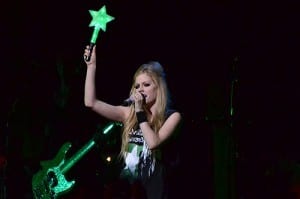
“I avoid writing stories with a message. It’s preachy and annoying.”
The Creation Process
I would rather have the reader go through that exercise. The Seven Deadly sins hook was something that came after the fact, when all the stories had been written. I did not start writing them with the intent to portray each of the 7 deadlies.What was the research process for these stories like? Minimal. For “Spooky Mo” I asked a professor friend who’d done research in Tokyo about the Japayuki and asked another professor friend about common Japanese surnames. Additionally, I looked up the phenomenon of vagina dentata after watching the indie flickTeeth. I actually went to that town in the Philippines where crucifixions are re-enacted, but as a tourist, not as a writer looking for short story material.
What role does the topic of domestic violence for women play in this short story collection?
It’s in the story about the little girl being abused by her father and in “Bangungot”. I wanted to show how eventually, abusers get what they deserve, even if it has to come from supernatural sources.
The stories in this collection have also been described as “feminist horror stories“. How do the elements of feminism intersect with those of horror in this collection?
The fact that the aggressors were women? I don’t know who described the collection as “feminist horror stories” but I never EVER start out thinking Well today, I’m going to write a feminist story. I avoid writing stories with a message. It’s preachy and annoying.
Which elements from your life or surroundings have played a large part in the creation of your characters and their respective worlds?
Every experience is fodder for story.
There is an emphasis on traditional comfort food, the roles of women in a patriarchal culture, and Catholicism throughout these stories. What made you decide to explore these aspects of Filipino society?
Ever experience is fodder for story. I happen to enjoy Filipino comfort food, I was raised in a Catholic patriarchal culture, so why not write from what I know?
Were there other topics that you aimed to emphasize in these short stories?
The fun supernatural folklore stuff.
Audience
I never think of an audience when I write. If I did, I would be an advertising copywriter, which I was, before I turned to fiction.What advice would you give a reader unfamiliar with the Catholic context and Filipino culture to help with reading and understanding the themes behind your text?
Just go with the flow and read other books if you really want to learn more about Catholics and Filipinos. I write stories, not textbooks.
Picking Favorites
If you had to pick a favorite story in this collection, which would it be, and why?
Questions About Each Story
1. “Talanung Manok (The Defeated Cock)”
Because Talunang Manok is the name of the actual Filipino dish.How did you think “Talanung Manok” would be received by the audience?
That’s not something I ever think about because how a reader “receives” a story is beyond my control.
2. “Child’s Play”
Where did the concepts for the Kibaan (tree folk) come from?
Philippine folklore.
3. “Manananggrrrl”
Was there a talk show in particular that you based this one?
I am disappointed you didn’t recognize Oprah.
4. “Bangungot”
Nightmare.The abusive husband is a common archetype used in your stories featuring domestic violence. From what sources did you draw inspiration and details for Esteban’s character?
He is an archetype but also someone I have encountered over multiple calls for the National Domestic Violence hotline.
What is “binagoongang baboy”? Google translate: “baboy” = pig, but nothing for “binagoongang”.
Bagoong – shrimp paste. It means pork stewed in shrimp paste.
5. “Lost in Digestion”
It does not. It was inspired by a neighbor I detested.
6. “Penitence”
The repression, the endless cycle of guilt, the actual ritual of annual crucifixion in that small town.
7. “Migrant Life”
Why did you use the set of Desperate Housewives as the source of Eulalia’s escape from her mundane, post-stroke life?
Because I’d watched a couple of seasons and knew all the characters.
Which Deadly Sin is associated with Eulalia?
8. “Consumption”
There is an urban legend in Manila that the daughter of one of the richest Chinese Filipino department store owners has a snake for a twin.
9. “Spooky Mo”
Yes. Spooky = puki (cunt) + spooky (scary)+ mo (your). Figure it out.















